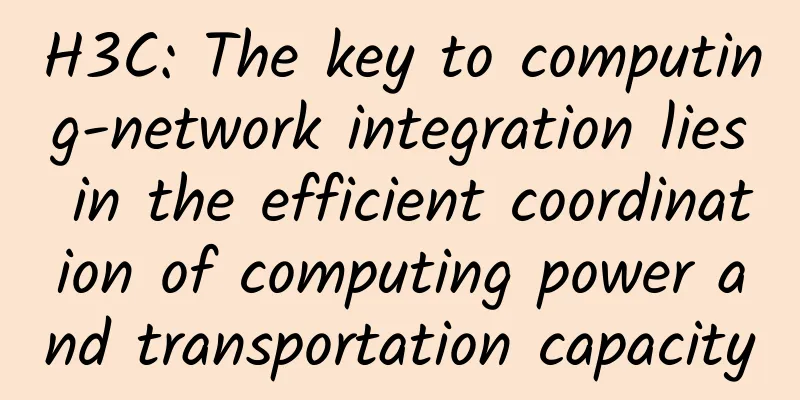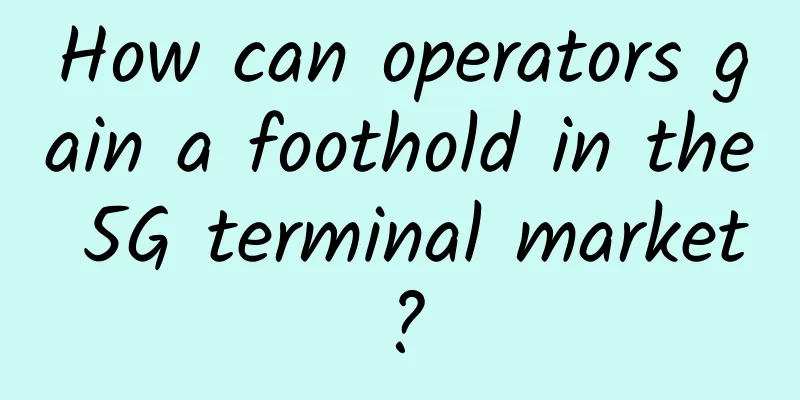How much do you know about OSI and TCP/IP? Let us take you into the world of communications

|
When I first came into contact with computers, I was very curious about how data was transmitted. Through later learning, I gradually understood the principles of computer communication. I believe that when many people learn computers, the first course they take is the principles of computer communication, and the principles of communication are inseparable from two reference models: the OSI seven-layer reference model and the TCP/IP four-layer model. 1. Physical layer: mainly defines physical equipment standards, such as the interface type of network cables, the interface type of optical fibers, the transmission rate of various transmission media, etc. Its main function is to transmit bit streams (that is, converting 1 and 0 into current strength for transmission, and then converting them into 1 and 0 after reaching the destination, which is what we often call digital-to-analog conversion and analog-to-digital conversion). The data at this layer is called bits. 2. Data Link Layer: defines how to format data for transmission and how to control access to the physical medium. This layer also usually provides error detection and correction to ensure reliable transmission of data. 3. Network layer: Provides connections and path selection between two host systems in a network located in different geographical locations. The development of the Internet has greatly increased the number of users accessing information from sites around the world, and the network layer is the layer that manages this connection. 4. Transport layer: defines some protocols and port numbers for data transmission (such as WWW port 80), such as TCP (Transmission Control Protocol, low transmission efficiency, strong reliability, used to transmit data with high reliability requirements and large data volume), UDP (User Datagram Protocol, which is exactly the opposite of TCP characteristics and is used to transmit data with low reliability requirements and small data volume, such as QQ chat data is transmitted in this way). It mainly segments and transmits the data received from the lower layer, and reassembles it after reaching the destination address. This layer of data is often called a segment. 5. Session layer: Establish a data transmission channel through the transport layer (port number: transmission port and receiving port). Mainly initiate a session or accept a session request between your systems (devices need to know each other, which can be IP, MAC or host name). 6. Presentation layer: It ensures that information sent by the application layer of one system can be read by the application layer of another system. For example, a PC program communicates with another computer, one of which uses Extended Binary Decimal Interchange (EBCDIC) and the other uses American Standard Code for Information Interchange (ASCII) to represent the same characters. If necessary, the presentation layer converts between multiple data formats by using a common format. 7. Application layer: This is the OSI layer closest to the user. This layer provides network services for user applications (such as email, file transfer, and terminal emulation). |
Recommend
VULTR adds its 30th data center in the world: Osaka, Japan
It has been more than half a year since I last sh...
V5.NET new cloud server 30% off monthly payment from HK$42, Hong Kong physical server monthly payment from HK$385
V5.NET has announced the news of new cloud server...
Aruba changes the rules of the game to drive three major changes in network management
When the first iPhone was released in 2007, Steve...
What exactly is Wi-Fi 6?
Wi-Fi has been around for more than two decades, ...
TMR: By 2026, the global smart manufacturing platform market will reach $15.93 billion
According to TMR, the global smart manufacturing ...
How 5G precision timing will change our automated world
What comes to mind when you hear the word “automa...
Wu Zhongjie: How to become an excellent network engineer
[51CTO.com original article] Today I want to shar...
Cloud computing in 2018: Switch or die
Cloud computing technology is creating a new and ...
It’s time to understand HTTPS and the encryption behind it
HTTPS (Hypertext Transfer Protocol Secure) is an ...
Five Myths About MPLS
MPLS has been a popular technology for enterprise...
5G news is coming! China Mobile has opened trial commercial services to 15 provinces: over 100 million users, no need to change to 5G phones
On October 14, at the "5G Message Ecosystem ...
The Legend of Network Protocols (IV): Be Careful in the Evolutionary Path
Vinton Cerf, who is revered as the "Father o...
Hard-core science! Analysis of the technical principles of number portability!
On November 11, the Ministry of Industry and Info...
Sketch of China's Government Cloud Industry in 2017
[[188315]] [51CTO.com original article] In the ne...
Three major development trends of outdoor wireless networks in 2021
As the extraordinary year of 2020 draws to a clos...

![[6.18]DogYun: Top up 100 yuan and get 10 yuan, 30% off for Dynamic Cloud, 20% off for Classic Cloud, 100 yuan off for Dedicated Server per month, up to 50% off for Lucky Wheel](/upload/images/67cac32ce6eaa.webp)
![[Black Friday] HawkHost: Cloud Web Hosting/Semi-Dedicated 70% off, Hong Kong/Los Angeles and other data centers](/upload/images/67cabcd62eb44.webp)






